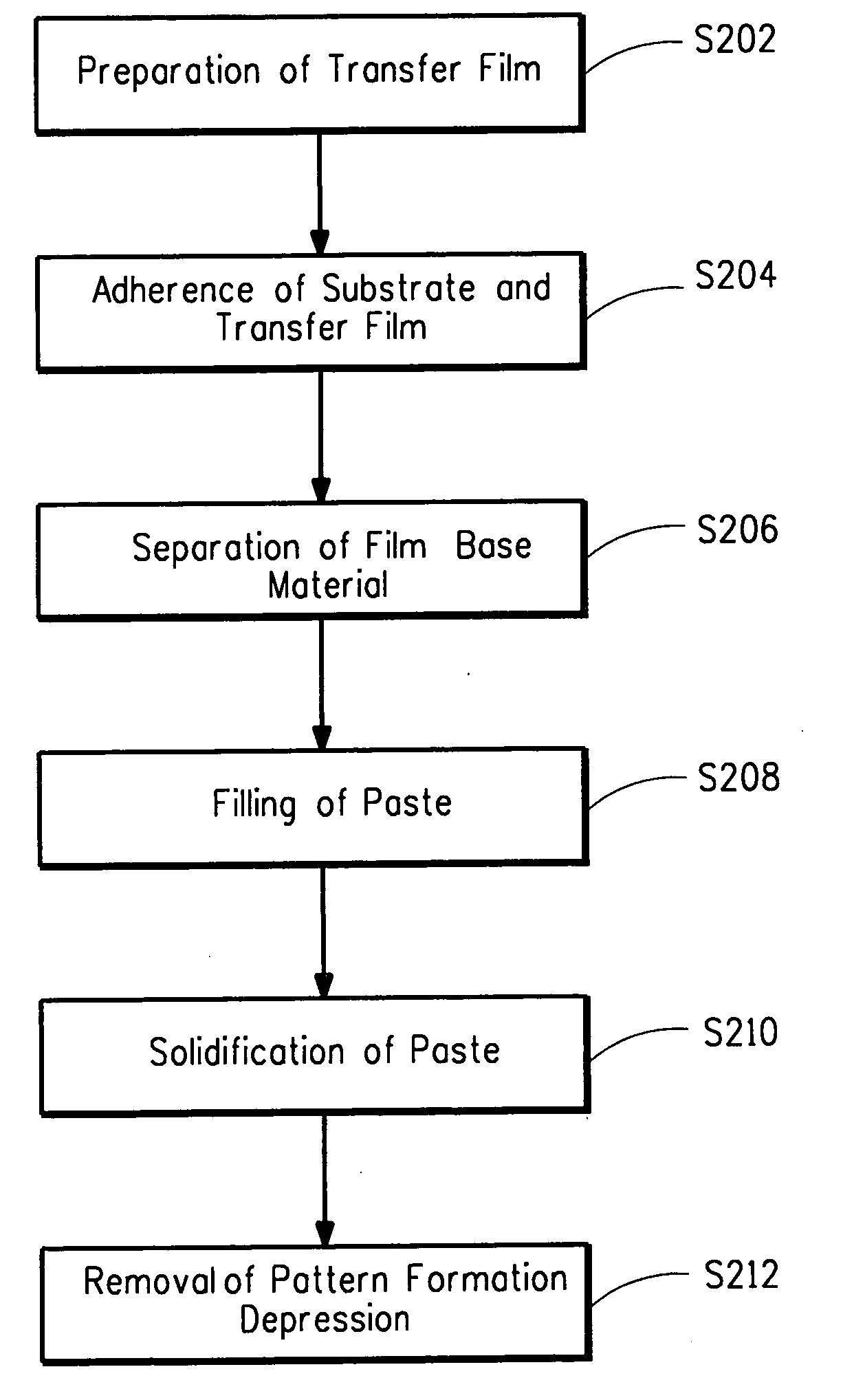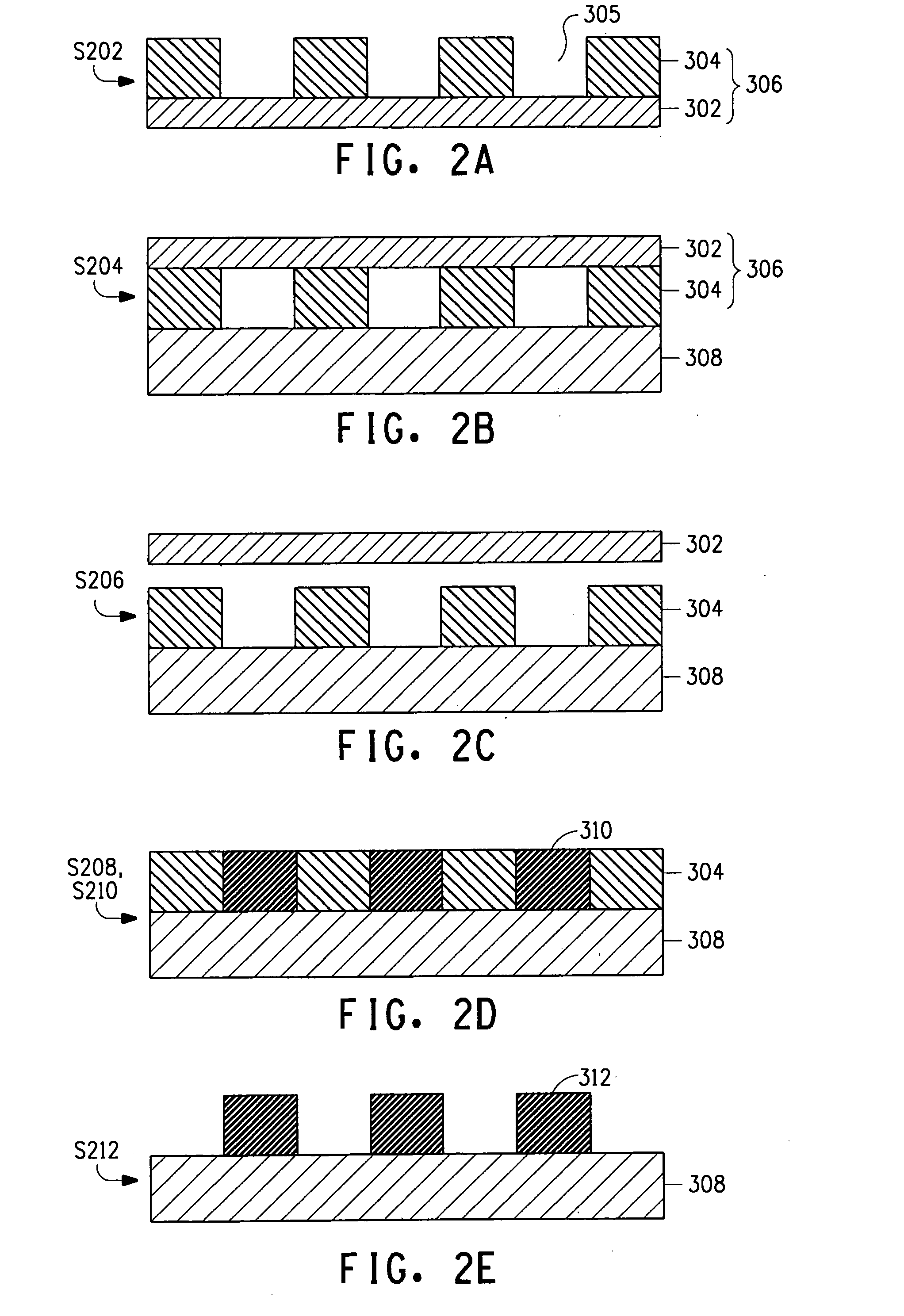Paste patterns formation method and transfer film used therein
a transfer film and pattern technology, applied in the manufacture of electrode systems, cold cathode manufacturing, electric discharge tube/lamp manufacture, etc., can solve the problems of low production efficiency, decrease in electrical conductivity of electrode patterns, and large dot pitch, so as to achieve high aspect ratio, not easy to produce, and easy to produ
- Summary
- Abstract
- Description
- Claims
- Application Information
AI Technical Summary
Benefits of technology
Problems solved by technology
Method used
Image
Examples
example 1
Production of Black Paste for Transfer Film
[0072]35 parts of polyvinyl alcohol resin PVA #500 (Kanto Chemical) were added to 65 parts of ion exchange water heated to 90° C. in a stainless steel container, and then dissolved by stirring for 2 hours. Next, after cooling the solution to room temperature, 15 parts of glycerin (Kanto Chemical) were added and stirred for 5 minutes. Next, 20 parts of a commercially available Indian ink (Kuretake, BA7-18) were added followed by stirring for 5 minutes to obtain a black paste-like PVA solution. Finally, this PVA solution was transferred to a plastic container and allowed to stand overnight to obtain a black paste for a transfer film.
[0073](Production of Transfer Film)
[0074]Using a TEFLON (registered trademark) 500 PFA film (available from E.I. du Pont de Nemours and Co.) for the film base material (film thickness: 125 μm), the black paste was coated thereon using a doctor blade method. Next, the coated paste was dried for 10 minutes in an ove...
example 2
Separation of Transfer Film: Hot Water Dissolving Method
[0082]A substrate having a transfer pattern depression filled with paste produced using the same method as Example 1 was heated for 10 minutes on a hot plate at 130° C. followed by removing from the hot plate and allowing to stand until it returned to room temperature. Next, the substrate with transfer pattern material was immersed for 10 minutes in hot water at 80° C. followed by ultrasonic treatment for 30 seconds using an ultrasonic cleaner. Subsequently, the substrate was removed from the hot water and washed with running water at 40° C. As a result, only the paste pattern of the embedded silver paste remained on the substrate. The shape of the resulting paste pattern was 70 μm wide and 60 μm deep. As noted previously, the aspect ratio has no upper limit, however in this example the aspect ratio was 6 / 7.
[0083]As has been described above, a paste pattern having a high aspect ratio (6 / 7) was also able to be formed easily usin...
PUM
| Property | Measurement | Unit |
|---|---|---|
| Pressure | aaaaa | aaaaa |
| Solubility (mass) | aaaaa | aaaaa |
| Adhesivity | aaaaa | aaaaa |
Abstract
Description
Claims
Application Information
 Login to View More
Login to View More - R&D
- Intellectual Property
- Life Sciences
- Materials
- Tech Scout
- Unparalleled Data Quality
- Higher Quality Content
- 60% Fewer Hallucinations
Browse by: Latest US Patents, China's latest patents, Technical Efficacy Thesaurus, Application Domain, Technology Topic, Popular Technical Reports.
© 2025 PatSnap. All rights reserved.Legal|Privacy policy|Modern Slavery Act Transparency Statement|Sitemap|About US| Contact US: help@patsnap.com



